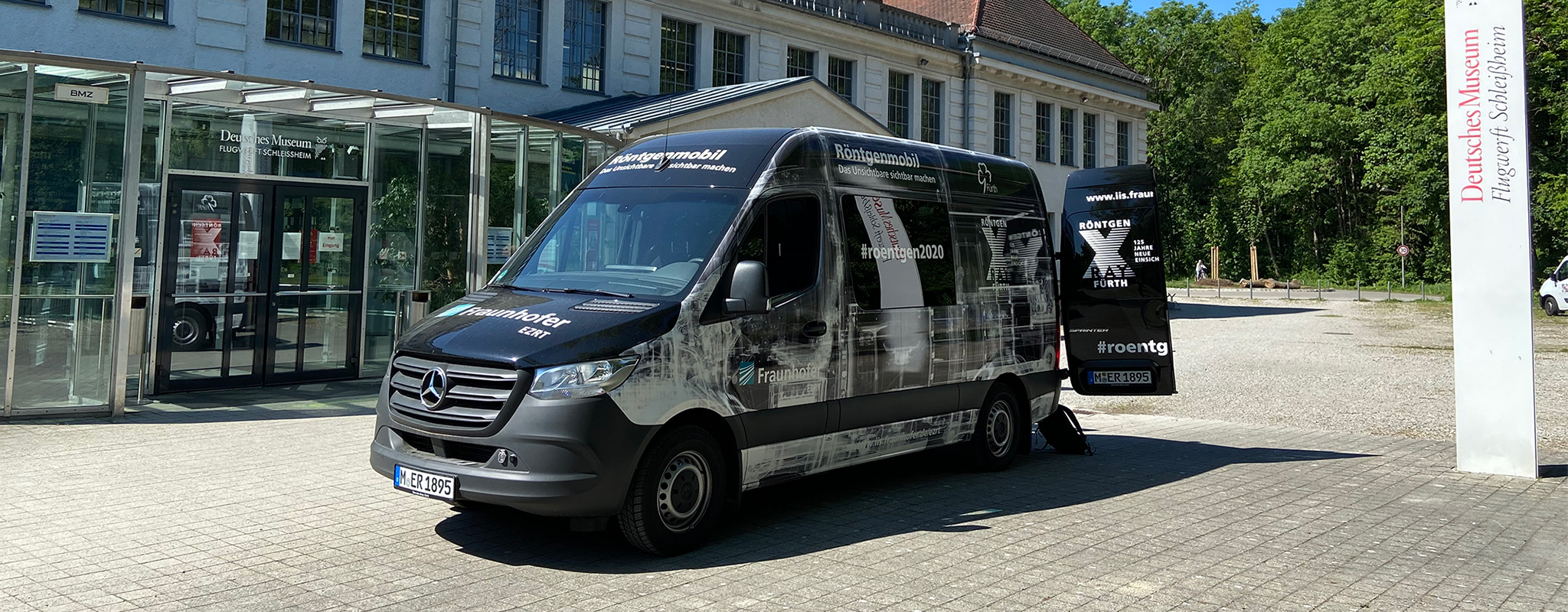A mobile computed tomography system is helping to digitalize European heritage sites
It has been 125 years since Wilhelm Conrad Röntgen almost by chance discovered the X-rays, which many languages still refer to as Röntgen radiation. His discovery was the beginning of a revolution in diagnostics, and not just in medicine. Other sciences, too, including archeology, are reaping the benefits as research and development continues for this technology.
A tiny yet fully equipped X-ray lab
The brainchild of the Fraunhofer Development Center for X-ray Technology EZRT, the X-ray on Wheels celebrates the 125th anniversary of the discovery of X-rays in its own very special way. Inside the vehicle is a fully equipped mobile lab featuring latest-generation technology. Its CTportable160.90 X-ray system is capable of scanning objects that are relatively easy to irradiate with a height of up to 200 millimeters and a diameter of up to 70 millimeters in three dimensions at a resolution in the micrometer range. It provides an energy spectrum of up to 90 kiloelectronvolts for recording the X-ray projections.
“Developed in-house at the institute, the CTportable product family is ideal for mobile use. We can use our X-ray on Wheels to present the versatility of X-ray technology at different locations,” explains Dr. Norman Uhlmann, division director of the Fraunhofer Development Center for X-ray Technology EZRT in Fürth.
Key enabler of digitalization for items of cultural heritage
Fragile and valuable museum exhibits in particular benefit from this gentle method of non-destructive material testing. Rather than exposing historically unique and irreplaceable artifacts to any risk during transportation, the Fraunhofer CT system drives to the exhibit instead.
To mark the anniversary of the X-rays' discovery, the mobile lab helped to investigate a whole host of interesting exhibits in 2020. In addition to fragments of Otto Lilienthal’s original glider, the X-ray on Wheels revealed the inner workings of the highly complex fabric used to make an astronaut’s glove.
It is also playing a key role in digitalizing European heritage sites. Our advanced CT systems help tackle this tremendous challenge and by capturing the objects in digital form, provide unprecedented insights into otherwise inaccessible knowledge.
